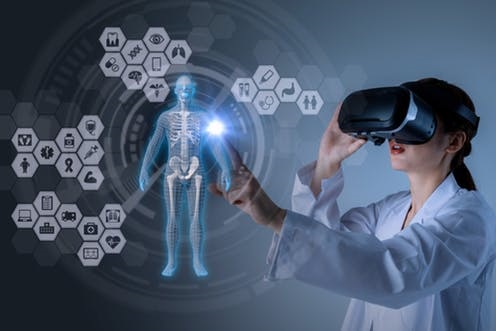Despite the virtual reality experience being a recently new technology, most people have some idea how it works and what they can expect from it. As a form of personal entertainment, virtual reality has become very popular, but the technology is so advanced (and continues to improve at a rapid rate of knots) that it has many more interesting applications, other than for its entertainment value.
Medicine is one of these applications where we are moving into uncharted territory, but where virtual reality can make huge inroads. It might sound like science fiction, but the virtual reality experience is starting to have profound effects on surgical training and in the treatment of a variety of different conditions.
How does the virtual reality experience assist surgical training?
With a global shortage of trained surgeons, wouldn’t it be great if surgeons could be taught different techniques in group sessions? Rather than one trainee surgeon being taught by one surgeon at one time, if twenty, thirty or more trainee surgeons could be taught surgical techniques at one time, then there would be many more qualified surgeons available around the world.
The other problem is that trainee surgeons need to practice their techniques, so it’s not just a matter of ‘see one, do one, teach one’, but it’s a matter of taking the time to perfect their techniques with the operative word on ‘time’.
This is where the virtual reality experience comes into its own, because the number of trainee surgeons who can be taught and practice their skills at one time is limited only by the number of headsets available. The realism of virtual reality is so perfect that it’s ideal for teaching surgical techniques, as the trainees feel that they are actually operating on a human body and can feel the amount of pressure needed by their scalpel or the resistance of the tissues.
Studies have shown that surgeons trained using a combination of virtual reality and traditional training methods make far fewer errors that surgeons who don’t have the benefit of virtual reality training.
How does the virtual reality experience help medical treatments?
You might be surprised to learn, but virtual reality has been used to treat or assist healing in a variety of different conditions. These include treating pain, phobias, post-traumatic stress and to assist in rehabilitation.
- Treating pain: A virtual reality program called SnowWorld has been designed to help patients suffering from severe burns to feel less pain from their grafting operations, as well as to remember their initial burns as being less painful.
- Phobias: People suffering from phobias can be so anxious that they can be literally paralysed with fear, however the virtual reality experience has been used to desensitize people and help them overcome their phobias.
- Post-traumatic stress: Reliving a traumatic event might not help people to overcome post-traumatic stress, but reliving it in a safe and virtual world has shown to be successful in helping suffers to reduce their anxieties.
- Rehabilitation: Virtual reality has even been used to help stroke victims to increase movements in their hands and fingers. It has also been found to be applicable to the treatment of addiction and its recovery process. The alcohol treatment dc and other rehabs are applying many methods to help the addiction patients efficiently.
As far as the virtual reality experience is concerned, we have barely scratched the surface! The applications of virtual reality seem endless and in just a few years’ time, we may take for granted how easily it’s incorporated into our lives.








